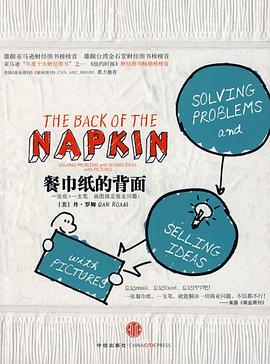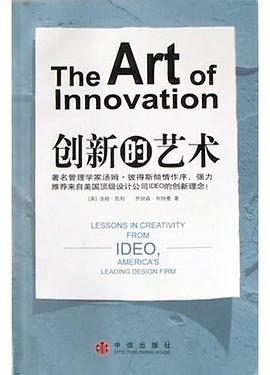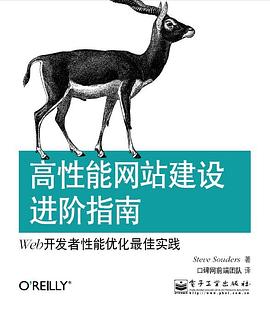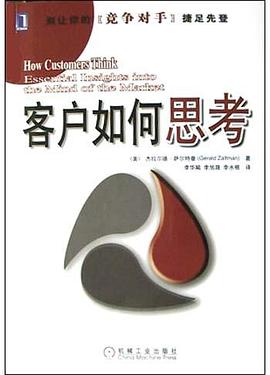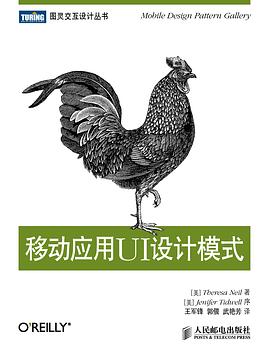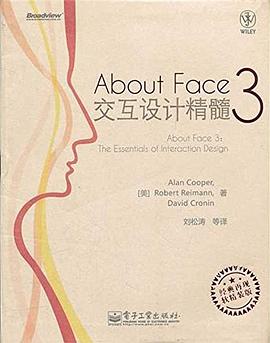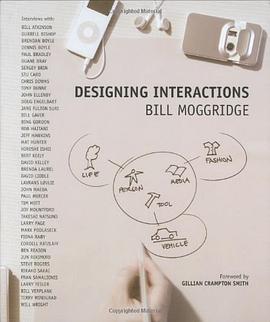

具體描述
Digital technology has changed the way we interact with everything from the games we play to the tools we use at work. Designers of digital technology products no longer regard their job as designing a physical object--beautiful or utilitarian--but as designing our interactions with it. In Designing Interactions, award-winning designer Bill Moggridge introduces us to forty influential designers who have shaped our interaction with technology. Moggridge, designer of the first laptop computer (the GRiD Compass, 1981) and a founder of the design firm IDEO, tells us these stories from an industry insider's viewpoint, tracing the evolution of ideas from inspiration to outcome. The innovators he interviews--including Will Wright, creator of The Sims, Larry Page and Sergey Brin, the founders of Google, and Doug Engelbart, Bill Atkinson, and others involved in the invention and development of the mouse and the desktop--have been instrumental in making a difference in the design of interactions. Their stories chart the history of entrepreneurial design development for technology. Moggridge and his interviewees discuss such questions as why a personal computer has a window in a desktop, what made Palm's handheld organizers so successful, what turns a game into a hobby, why Google is the search engine of choice, and why 30 million people in Japan choose the i-mode service for their cell phones. And Moggridge tells the story of his own design process and explains the focus on people and prototypes that has been successful at IDEO--how the needs and desires of people can inspire innovative designs and how prototyping methods are evolving for the design of digital technology. Designing Interactions is illustrated with more than 700 images, with color throughout. Accompanying the book is a DVD that contains segments from all the interviews intercut with examples of the interactions under discussion. Interviews with:
Bill Atkinson, Durrell Bishop, Brendan Boyle, Dennis Boyle, Paul Bradley, Duane Bray, Sergey Brin, Stu Card, Gillian Crampton Smith, Chris Downs, Tony Dunne, John Ellenby, Doug Englebart, Jane Fulton Suri, Bill Gaver, Bing Gordon, Rob Haitani, Jeff Hawkins, Matt Hunter, Hiroshi Ishii, Bert Keely, David Kelley, Rikako Kojima, Brenda Laurel, David Liddle, Lavrans Løvlie, John Maeda, Paul Mercer, Tim Mott, Joy Mountford, Takeshi Natsuno, Larry Page, Mark Podlaseck, Fiona Raby, Cordell Ratzlaff, Ben Reason, Jun Rekimoto, Steve Rogers, Fran Samalionis, Larry Tesler, Bill Verplank, Terry Winograd, and Will Wright
用戶評價
##@ginrain original version...
評分 評分 評分 評分##訪談加曆史
評分##都說做設計的人要找到自己的Influence,Interaction Design也是一樣。 好在計算機的曆史還不長,這本書介紹瞭那些塑造瞭現代計算機界麵發展路綫的人的突齣貢獻。每個人的經曆都多到能夠寫一本書,所以這本書的深度上當然是受到限製的。但是這也是為什麼這本書可以作為總綱一樣...
評分##裝幀美
評分##最近在對比著閱讀一本書。英文版的《designing interactions》和中文譯本《關鍵設計報告》。發現中文譯本裏麵是否有錯?可能譯者不是做交互設計的原因吧。比如:P127,...and we provide affordance這句,應該說的是物的設計應該更容易讓用戶理解“可以用它來乾嘛”。而非譯文...
評分##In the same way that industrial designers have shaped our everyday life through objects that they design for our offices and for our homes, interaction design is shaping our life with interactive technologies-computers, telecommunications, mobile phones, an...
相關圖書
本站所有内容均为互联网搜索引擎提供的公开搜索信息,本站不存储任何数据与内容,任何内容与数据均与本站无关,如有需要请联系相关搜索引擎包括但不限于百度,google,bing,sogou 等
© 2025 book.tinynews.org All Rights Reserved. 静思书屋 版权所有








